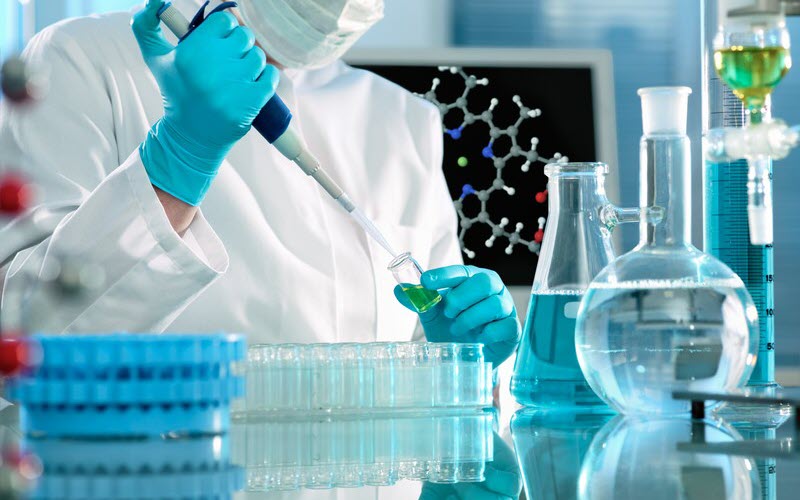EQMS Blog

Required ISO 17025 Laboratory Procedures
What is ISO 17025?
Across the globe, an ISO 17025 accreditation is the most recognized accreditation for calibration and testing laboratories. Initially, ISO/IEC 17025 was issued in 1999 by the International Organisation for Standardisation (ISO) and the International Electro-technical Commission (IEC). The most recent version or update of the standard ISO 17025:2017 was revised for coordination with ISO 9001:2015. As for calibration and testing laboratories, then there is no doubt that ISO 17025 is the single most important standard to get accredited to.
Importance of ISO 17025
In general, then ISO 17025 is used by laboratories in order to implement a quality system which ensure their ability to consistently deliver valid and trusted results. The term of ‘Accreditation’ implies the deliverance of an underlying guarantee that an organisation is following the standards that is internationally acknowledged.
Required ISO 17025 Laboratory Procedures
For a laboratory, a prerequisite to become accredited is to have an adequate documented quality system in place. Undeniably, analytical testing laboratories striving for ISO 17025 will be affected in various areas. In the ISO 17025:2017 fewer documents are actually required compared to the 2005 revision. Practical work calls for the appropriate use of laboratory equipment and obligates to following controlled procedures, because it is the required by ISO 17025:2017 that laboratories must prove their competence.
Laboratory Equipment
The key tools for laboratory work are referred to as laboratory equipment. All measurement equipment used in a laboratory must be calibrated and traceable to national and international standards to demonstrate competence under the associated clauses (6.2, 6.4.6, and 6.4.13). It implies that this equipment is in the right condition, regularly calibrated and maintained, and most importantly the equipment is operated by skilled personnel.
Laboratory Environment
It should be kept in mind that effective use of laboratory equipment is affected by the environment in which we perform the measurement. Measurements can be performed within the controlled environment of the laboratory where conditions usually are easy to maintain. However, in a number of cases, we may have to perform measurements onsite, where environmental settings show a discrepancy and may affect the outcome of the measurement if nor managed properly.
Therefore, in order to preserve the laboratory’s reputation and ability to provide accurate results, it is essential to use supporting measurement equipment to monitor, control and record critical environmental parameters when tests are conducted. In this aspect, it is important to maintain the quality of the measurements by means of following user manuals for the laboratory equipment.
Measurement Procedures
Likewise, proper methods and work procedures must be selected by the laboratory that specifies the criteria of performance and suitable management of measurement equipment. In order to do so there are two choices for such procedures. The first choice is to develop an internal procedure for measurement. It is necessary to provide evidence through documented proof that the measuring method is reliable if the laboratory have developed their own procedure. The laboratory must also ensure that its measuring method is relevant and, most importantly, accuracy and quality is provided in terms of accurate and reliable measuring results.
The second choice is to develop or use a procedure where the essential points of an industry recognized measurement standard are followed. It is still required to validate that the process is acceptable for use in the setup the laboratory choose to use it, to demonstrate its competence for measuring through a relevant standard test method. In this perspective, the performance criteria must be recorded in the guidelines, and the actions incorporated in the procedure. It is of paramount value to define what will be done exactly, and which specific actions will be followed with which component of the standard. In addition to that those actions will provide equipment handling and guiding principles for the employees who are responsible for the measurement, and they must ensure that this process can be repeated for new customers.
Measurement Report
Moreover, when operations are consistent with procedural documents and the measuring equipment is used as intended, this certifies the expected performance of the method to create an effective measurement result. As a final point, the published final report must adhere to the thorough requirements of clause 7.8 of ISO 17025:2017.
If you are looking to get accredited to ISO 17025 or is interested in outsourcing your internal audit, then contact us for a free consultation and see how we can support with your project.

Request a free consultation
Contact us to discuss your needs and see how we can support to reach your goal.

Recent posts

In today's digital age, businesses are constantly exposed to various cyber threats. As a result, companies must adopt a proactive approach to cybersecurity to prevent data breaches, theft, and other...

Quality management systems are essential in ensuring that organisations can deliver quality products and services consistently. The International Organisation for Standardization (ISO) developed the ISO 9001 standard to help organisations...

ISO 14001 is a globally recognised standard for environmental management systems (EMS) that helps organisations manage their environmental impact and improve their sustainability performance. Obtaining this certification demonstrates a company's...
Just a Few of Our Clients
Request a Free Consultation
Contact us to discuss your needs and see how we can support to reach your goal.












